In the world of natural fibers, sisal, jute, and seagrass stand out as versatile materials with distinct characteristics and diverse applications. Understanding the differences between sisal vs jute vs seagrass rugs allows us to appreciate the nuances of their textures, strengths, and eco-friendly contributions.
Contents [hide]
1. What is Sisal?
Sisal is a long, stiff, and rugged fiber made from the agave plant which is traditionally found in Southern Mexico. Sisal is also referred to as sisal cake or sisal bale. Additionally, in certain regions or localities, sisal cake may be known by other names such as sisal coir.
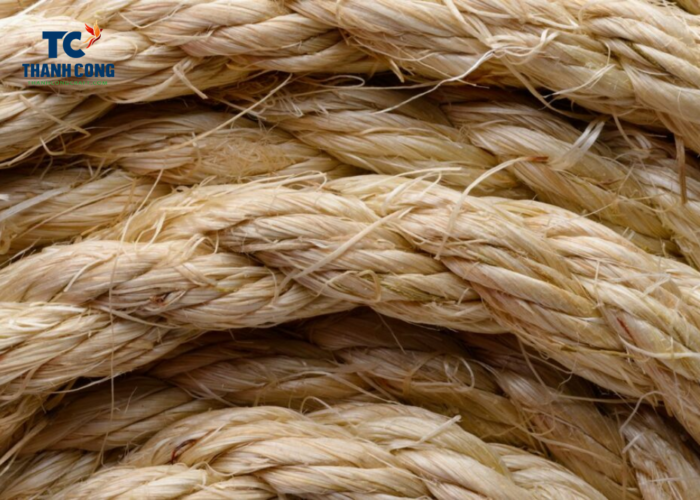
Sisal is a long, stiff, and rugged fiber made from the agave plant which is traditionally found in Southern Mexico, scientifically known as Agave sisalana. The sisal plant is commonly cultivated in arid regions of Africa and Latin America. Sisal fibers range in color from white to brown and have a length of approximately 1 to 2 meters.
These fibers boast high tensile strength, good durability, and minimal deformation when exposed to water. They find extensive use in the production of items such as ropes, nets, sisal carpet, and even floor coverings. Sisal fibers are also employed in paper and fabric manufacturing, sisal rugs as well as in various personal care products.
Furthermore, sisal is regarded as an eco-friendly material, as it can be recycled to create new products after use. This versatility contributes to its sustainable appeal across a range of industries.
2. What is Jute?
The jute plant is known for its robust growth in tropical regions, where the humidity ranges from approximately 60% to 90%. A single jute plant can absorb up to 15 tons of carbon and release 11 tons of oxygen into the environment. In terms of productivity, each hectare can yield about 2 tons of jute fiber.
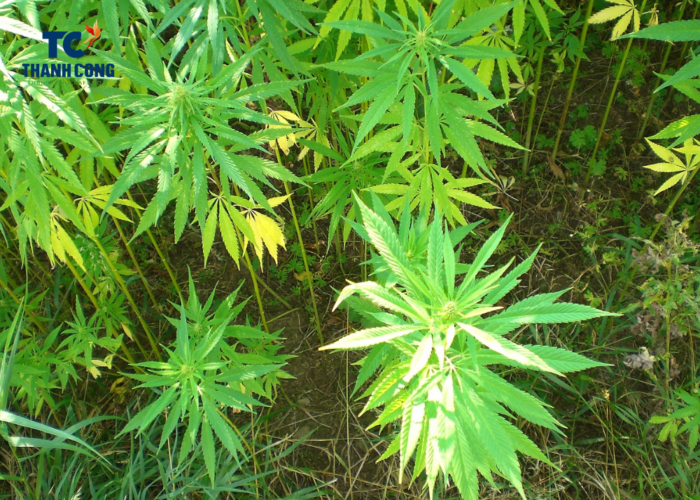
Jute fiber is produced from the past or skin of the jute plant. Typically, jute fibers measure around 1 to 4 meters in length, with a diameter of 17 to 20 micrometers. The fibers are soft, pliable, and possess a natural luster.
Jute fiber is recognized as one of the strongest natural plant fibers, second only to cotton in terms of production quantity. Noteworthy characteristics of jute fiber include excellent anti-static properties, moderate moisture absorption, and low thermal conductivity
3. What is Seagrass?
Seagrass is a type of plant that thrives in wet areas, with rhizomes and tuberous roots (often referred to as seagrass tubers) growing at a depth of 0.50-1m.
It has slender stems, growing erect and reaching a height of 1-2m. In Vietnam, seagrass is cultivated and grows wild along the coast, mangrove in the northern provinces from Quang Ninh to Thanh Hoa and along the coast of the Central South provinces in Vietnam.
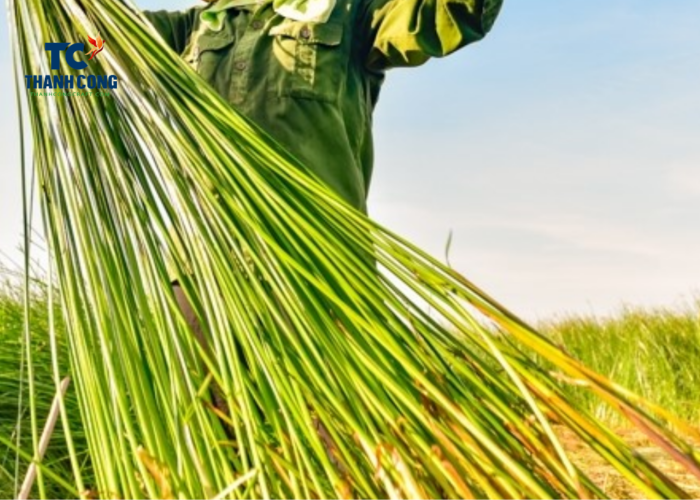
Seagrass is primarily used to make seagrass baskets, seagrass rugs, mats, and various handicrafts. Nowadays, due to the positive reception of seagrass products by consumers, these items have become increasingly diverse in design on the market to meet customer demands.
4. The Differences between sisal vs jute vs seagrass
The distinctions among sisal, jute, and seagrass lie in their botanical origins, physical attributes, and applications. Sisal, extracted from the agave plant, boasts strength and durability, making it ideal for ropes and mats.
Jute, derived from the jute plant, offers a softer and finer fiber, often used in textiles and burlap. Seagrass, a marine plant, provides versatile fibers for products like mats and baskets. Each material brings unique qualities, catering to diverse needs in industries ranging from textiles to home decor.
4.1 Sisal vs Jute
The Similarities Between Sisal and Jute
- Both sisal and jute are natural fibers, making them renewable resources. They are environmentally friendly and biodegradable, contributing to sustainability.
- Versatility: Sisal and jute fibers are versatile and find applications in various industries, including textiles, home decor, and packaging.
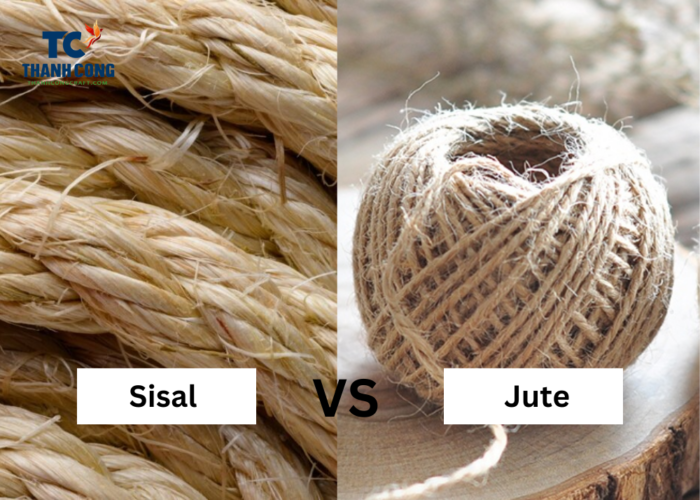
- Cultural and Economic Importance: Both sisal and jute have cultural and economic significance, with traditional uses in crafts, textiles, and various products in regions where they are cultivated.
- Biodegradability: Sisal and jute, being plant-based fibers, decompose naturally, reducing environmental impact.
- Wide Range of Applications: Both fibers are utilized in the production of ropes, twines, mats, and certain types of textiles.
- Global Cultivation:Sisal and jute are cultivated in specific regions worldwide, contributing to local economies and industries
The Differences Between Sisal and Jute
Plant Origin:
- Sisal: Sisal is a long, stiff, and rugged fiber made from the agave plant which is traditionally found in Southern Mexico. Sisal is also referred to as sisal cake or sisal bale.
- Jute: Jute fiber is produced from the past or skin of the jute plant. Typically, jute fibers measure around 1 to 4 meters in length, with a diameter of 17 to 20 micrometers.
Growing Conditions:
- Sisal: Thrives in arid regions with lower humidity levels.
- Jute: Flourishes in warm and humid climates, such as those found in South Asia.
Fiber Characteristics:
- Sisal: Coarse, strong fibers with a natural sheen, known for their durability.
- Jute: Softer, finer fibers with a golden shine, more flexible but less durable compared to sisal.
Color:
- Sisal: Ranges from off-white to light brown.
- Jute: Natural golden to brown color.
Strength and Durability:
- Sisal: Strong and durable, resistant to deterioration in saltwater.
- Jute: Softer and less durable compared to sisal.
Applications:
- Sisal: Commonly used for ropes, twines, mats, and certain types of carpets.
- Jute: Widely used in textiles, particularly in the manufacturing of burlap, sacks, and softer fabrics. Also used in home decor.
Cultural and Traditional Uses:
- Sisal: Historically used for traditional crafts and products requiring strength.
- Jute: Has cultural significance in South Asian regions and is traditionally used in crafts and textiles.
4.2 Sisal vs Seagrass
The Similarities Between Sisal and Seagrass
- Renewable and Biodegradable: Both sisal and seagrass are natural fibers, making them renewable and biodegradable resources.
- Eco-Friendly Characteristics: Both fibers contribute to environmental sustainability and are considered eco-friendly materials.
- Versatility: Sisal and seagrass fibers are versatile and find applications in various industries, including textiles, home decor, and crafts.
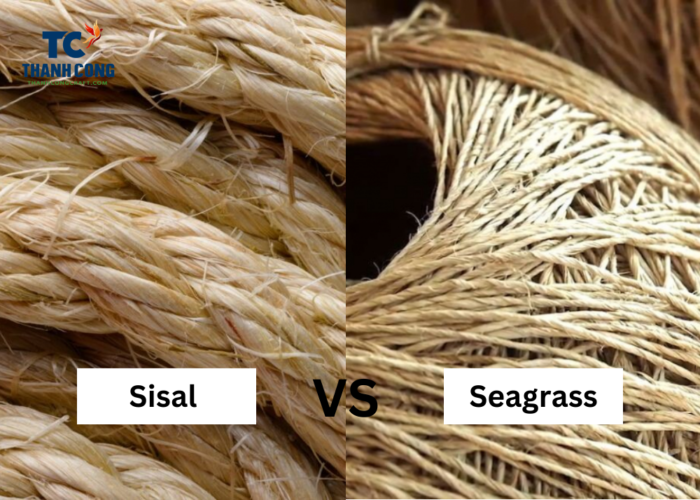
- Cultural and Economic Importance: Both sisal and seagrass have cultural and economic significance, with traditional uses in crafts, rugs, and various products.
- Biodegradability: Sisal and seagrass, being plant-based fibers, decompose naturally, reducing environmental impact.
- Wide Range of Applications: Both fibers are utilized in the production of rugs, mats, baskets, and certain types of textiles.
The Differences Between Sisal and Seagrass
Plant Origin:
- Sisal: Sisal is a long, stiff, and rugged fiber made from the agave plant which is traditionally found in Southern Mexico. Sisal is also referred to as sisal cake or sisal bale.
- Seagrass: Cyperus, commonly known as seagrass, belongs to the Cyperus genus. Seagrass is a type of plant that thrives in wet areas, with rhizomes and tuberous roots (often referred to as seagrass tubers) growing at a depth of 0.50-1m.
Growing Conditions:
- Sisal: Thrives in arid regions with lower humidity levels.
- Seagrass: Grows underwater in coastal environments, requiring a mix of saltwater and freshwater.
Fiber Characteristics:
- Sisal: Coarse, strong fibers with a natural sheen, known for their durability.
- Seagrass: Softer fibers with a smoother texture, often used for a more casual or beachy aesthetic.
Color:
- Sisal: Ranges from off-white to light brown.
- Seagrass: Typically has a greenish hue, reflecting its marine origin.
Strength and Durability:
- Sisal: Strong and durable, resistant to wear and tear.
- Seagrass: is seagrass softer than sisal, more susceptible to damage.
Applications:
- Sisal: Commonly used for ropes, twines, mats, and certain types of carpets.
- Seagrass: Frequently used for rugs, mats, baskets, and furniture, often chosen for its casual, coastal look.
4.3 Seagrass vs Jute
The Similarities Between Seagrass and Jute
- Renewable and Biodegradable:Both seagrass and jute are natural fibers, making them renewable and biodegradable resources.
- Eco-Friendly Characteristics: Both fibers contribute to environmental sustainability and are considered eco-friendly materials.
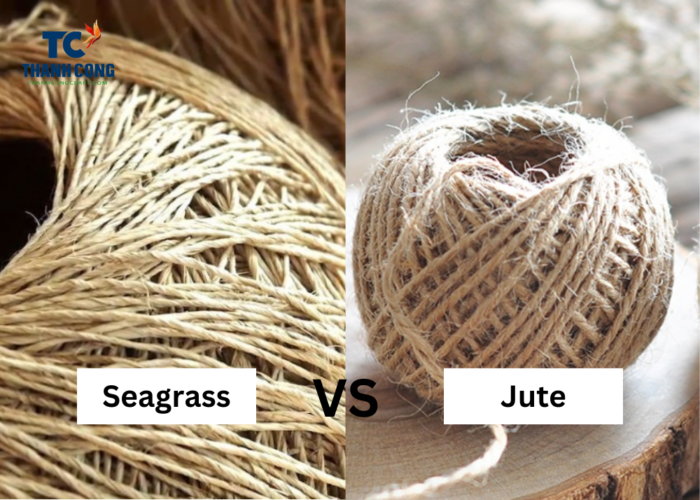
- Versatility: Seagrass and jute fibers are versatile and find applications in various industries, including textiles, home decor, and crafts.
- Cultural and Economic Importance: Both seagrass and jute have cultural and economic significance, with traditional uses in crafts, rugs, and various products.
- Biodegradability: Seagrass and jute, being plant-based fibers, decompose naturally, reducing environmental impact.
The Differences Between Seagrass and Jute
Plant Origin:
- Seagrass: Derived from marine plants that grow underwater in coastal areas.
- Jute: Extracted from the inner bark of the jute plant, primarily Corchorus capsularis and Corchorus olitorius.
Growing Conditions:
- Seagrass: Grows underwater in coastal environments, requiring a mix of saltwater and freshwater.
- Jute: Flourishes in warm and humid climates, such as those found in South Asia.
Fiber Characteristics:
- Seagrass: Softer fibers with a smoother texture, often used for a more casual or beachy aesthetic.
- Jute: Coarser fibers with a natural golden shine, known for their flexibility and versatility.
Color:
- Seagrass: Typically has a greenish hue, reflecting its marine origin.
- Jute: Natural golden to brown color.
Strength and Durability:
- Seagrass: Softer and less durable compared to jute, more susceptible to damage.
- Jute: Strong and durable, suitable for various applications.
Applications:
- Seagrass: Frequently used for rugs, mats, baskets, and furniture, often chosen for its casual, coastal look.
- Jute: Commonly used in textiles, particularly in the manufacturing of burlap, sacks, and softer fabrics.
In the realm of rugs, the selection between sisal vs jute vs seagrass unveils a tapestry of choices, each with its distinctive charm. Sisal rugs bring forth robust strength, embodying durability with a natural sheen. Jute rugs, on the other hand, boast a golden allure, adding versatility and a touch of rustic elegance. Seagrass rugs contribute coastal charm, weaving a laid-back aesthetic into living spaces.
If you have any further questions, don’t hesitate to send thanhcongcraft an email us at info@thanhcongcraft.com or message us at WhatsApp: +84967485411. Hope to serve you soon! Best regard!


